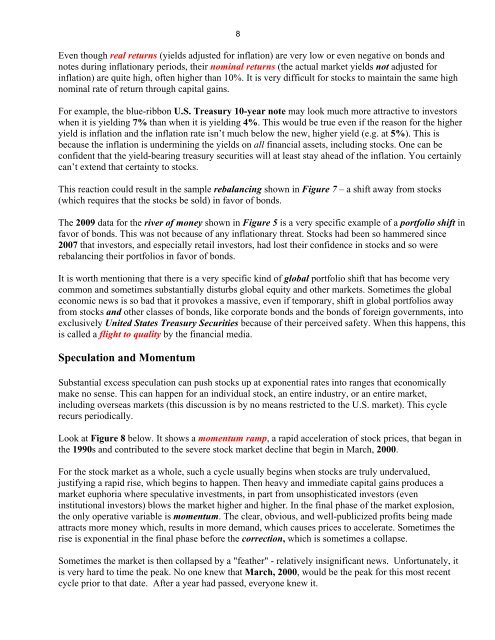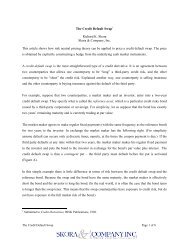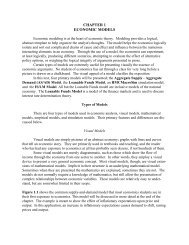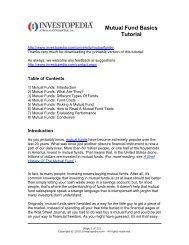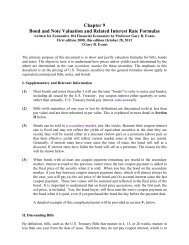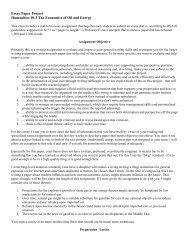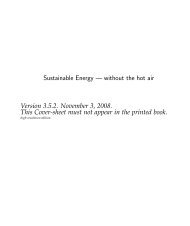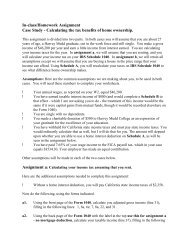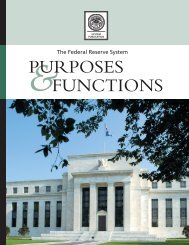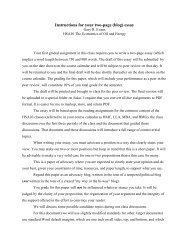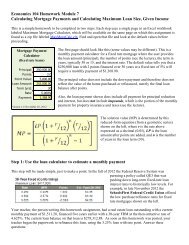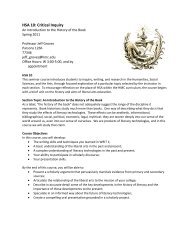Create successful ePaper yourself
Turn your PDF publications into a flip-book with our unique Google optimized e-Paper software.
8Even though real returns (yields adjusted for inflation) are very low or even negative on bonds andnotes during inflationary periods, their nominal returns (the actual market yields not adjusted forinflation) are quite high, often higher than 10%. It is very difficult for stocks to maintain the same highnominal rate of return through capital gains.For example, the blue-ribbon U.S. Treasury 10-year note may look much more attractive to investorswhen it is yielding 7% than when it is yielding 4%. This would be true even if the reason for the higheryield is inflation and the inflation rate isn’t much below the new, higher yield (e.g. at 5%). This isbecause the inflation is undermining the yields on all financial assets, including stocks. One can beconfident that the yield-bearing treasury securities will at least stay ahead of the inflation. You certainlycan’t extend that certainty to stocks.This reaction could result in the sample rebalancing shown in Figure 7 – a shift away from stocks(which requires that the stocks be sold) in favor of bonds.The 2009 data for the river of money shown in Figure 5 is a very specific example of a portfolio shift infavor of bonds. This was not because of any inflationary threat. <strong>Stock</strong>s had been so hammered since2007 that investors, and especially retail investors, had lost their confidence in stocks and so wererebalancing their portfolios in favor of bonds.It is worth mentioning that there is a very specific kind of global portfolio shift that has become verycommon and sometimes substantially disturbs global equity and other markets. Sometimes the globaleconomic news is so bad that it provokes a massive, even if temporary, shift in global portfolios awayfrom stocks and other classes of bonds, like corporate bonds and the bonds of foreign governments, intoexclusively United States Treasury Securities because of their perceived safety. When this happens, thisis called a flight to quality by the financial media.Speculation and MomentumSubstantial excess speculation can push stocks up at exponential rates into ranges that economicallymake no sense. This can happen for an individual stock, an entire industry, or an entire market,including overseas markets (this discussion is by no means restricted to the U.S. market). This cyclerecurs periodically.Look at Figure 8 below. It shows a momentum ramp, a rapid acceleration of stock prices, that began inthe 1990s and contributed to the severe stock market decline that begin in March, 2000.For the stock market as a whole, such a cycle usually begins when stocks are truly undervalued,justifying a rapid rise, which begins to happen. Then heavy and immediate capital gains produces amarket euphoria where speculative investments, in part from unsophisticated investors (eveninstitutional investors) blows the market higher and higher. In the final phase of the market explosion,the only operative variable is momentum. The clear, obvious, and well-publicized profits being madeattracts more money which, results in more demand, which causes prices to accelerate. Sometimes therise is exponential in the final phase before the correction, which is sometimes a collapse.Sometimes the market is then collapsed by a "feather" - relatively insignificant news. Unfortunately, itis very hard to time the peak. No one knew that March, 2000, would be the peak for this most recentcycle prior to that date. After a year had passed, everyone knew it.


